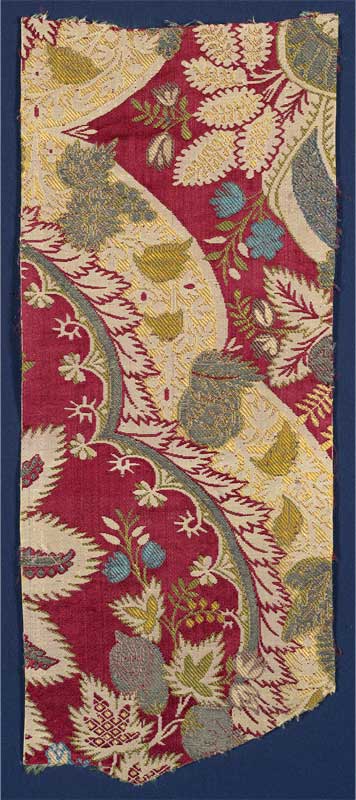Fashionable Luxuries: French and Italian Textiles
Even 200 years ago, fashion changed quickly, often radically. To make their fabrics more alluring to a wealthy clientele, designers created innovative patterns that reflected the latest trends by incorporating sumptuous metallic threads, brilliant colors, foreign influences and elaborate weaving processes. This exhibition displays silk fragments spanning the 1500s-1700s which once adorned the elite and their furnishings.
Often called “bizarre” silks, textiles with patterns of fanciful flowers were created in France in the late 1600s to the early 1700s. They were inspired by imported Asian wares, such as Chinese porcelains, Japanese lacquers and Indian painted and printed textiles. Brocaded fabrics from the mid-1700s are splendid examples of a technically complicated weaving process which includes myriad colors, each of which is introduced through new wefts, or horizontal threads. Well-suited for upholstery and clothing, velvets were made throughout Europe and could be lavishly embellished with metallic threads—a luxurious touch for the affluent and fashionable consumer.
